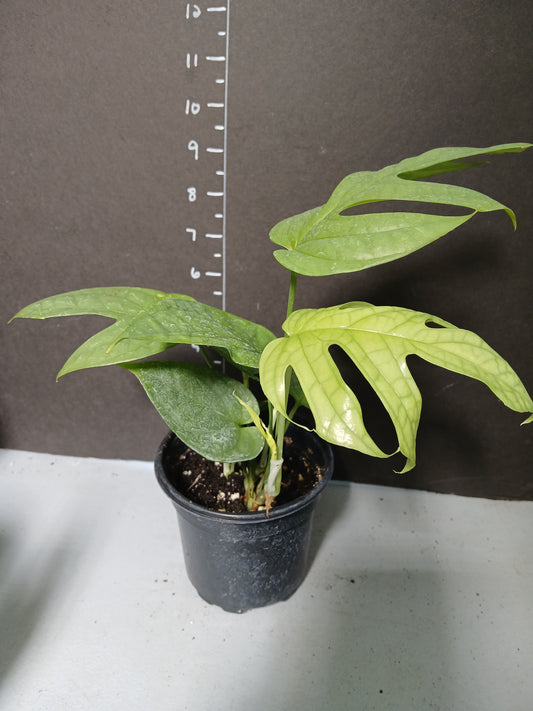Collection: Monstera
Monstera is a popular and iconic tropical houseplant known for its large, glossy, and fenestrated leaves. Here are some key points about Monstera plants:
1. **Appearance**: Monstera plants have large, heart-shaped leaves that develop unique splits and holes as they mature, giving them a distinctive and striking appearance. The fenestrations (or splits) in the leaves are where the "Swiss cheese" nickname comes from.
2. **Growing Conditions**: Monstera plants are relatively easy to care for and can thrive indoors with the right conditions. They prefer bright, indirect light but can tolerate some lower light conditions. They also like well-draining soil and regular watering, allowing the top inch or two of soil to dry out between waterings.
3. **Propagation**: Monstera plants can be propagated through stem cuttings, which can root in water or directly in soil. This is a popular way to create new plants or share with friends.
4. **Air Purifying Qualities**: Like many houseplants, Monstera plants can help improve indoor air quality by filtering out toxins and releasing oxygen.
5. **Toxicity**: Monstera plants are toxic to pets if ingested. The plant contains calcium oxalate crystals, which can cause irritation and discomfort if pets nibble on the leaves. It's important to keep Monstera plants out of reach of pets and children.
6. **Decorative Use**: Monstera plants are not only popular for their unique appearance but also for their ability to add a tropical and lush feel to indoor spaces. They are commonly used in interior design to bring a touch of nature indoors.
Overall, Monstera plants are a favorite among plant enthusiasts due to their striking looks, relatively easy care requirements, and the tropical ambiance they bring to indoor spaces.
-
Rare. Monstera Spiderman in four inch pots. Photos b4 Shipping.
Regular price $12.00 USDRegular priceUnit price / per -
Monstera Obliqua Explicata four inch pot. Photos b4 Shipping
Regular price $12.00 USDRegular priceUnit price / per$50.00 USDSale price $12.00 USDSale -
Monstera Adansonii Swiss Cheese three inch starter pot. Photo b4 shipping
Regular price $5.00 USDRegular priceUnit price / per$0.00 USDSale price $5.00 USD


